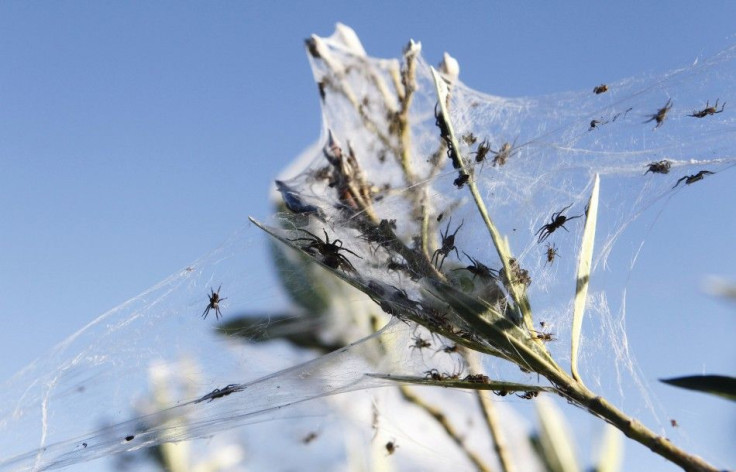Researchers Discover 'Flying Spiders' In South American Forest

A few tropical spiders have evolved to “glide” through the air, from tree to tree, without the help of silk or wings, claims a team of researchers from the University of Louisville in Kentucky.
According to a study published in the Journal of the Royal Society Interface, spiders in the genus Selenops have the ability to steer through the air with the help of their outstretched legs. These spiders are also called “flatties,” for their extremely flat bodies that measures around two inches in diameter.
Researchers further say that this is a one of its kind discovery since spiders have never been known to fly or have wings. According to the team, “flatties” are unaggressive in nature and easily merge with the tree trunks in the tropical forests.
The lead researcher and arthropod ecologist, Stephen Yanoviak, believes that the spiders might have evolved after finding that tree trunks may be a better dwelling option than the forest floor.
The researchers began the study 10 years ago when they started to drop off different creatures from the tree branches to study the gliding behavior. During their analysis of the flight path in spiders, the team dropped 59 of them from the branch and found that each of them had a definite targeted trajectory. All of the spiders landed on the trunk of the nearby trees, suggesting that the spiders did not float without aim.
"It doesn't really matter what angle the initial trajectory we give them is when we drop them, they will always turn themselves right side-up in fractions of a second and will start gliding," said Yanoviak.
Researchers further suggest that the spiders use the gliding technique to avoid predators, or to save themselves in case they accidentally fall from the branch of the tree.
© Copyright IBTimes 2024. All rights reserved.





















